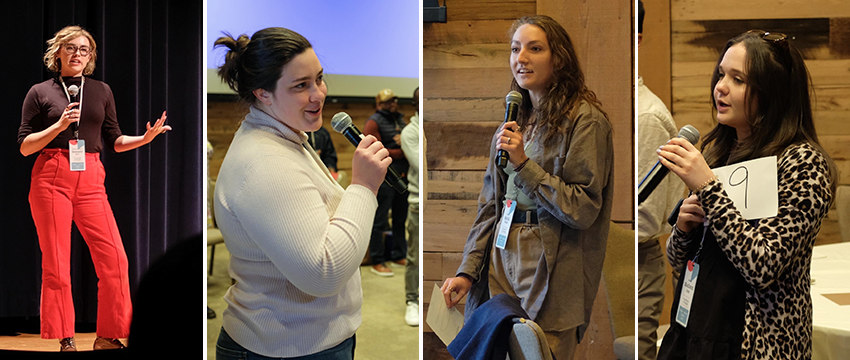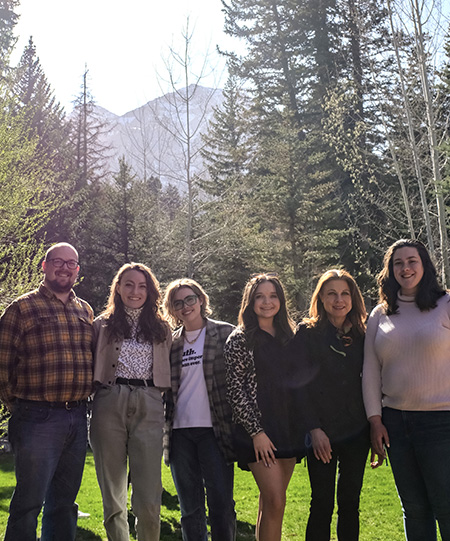Students attend Solutions Journalism Summit

Students attend Solutions Journalism Summit
Sharing answers, and not just reporting on challenges, is the foundation of solutions journalism. For four Grady College students, discussing applications and the impact of these concepts in a small setting was an inspiring way to cap their college careers.
The group from the Department of Journalism attended the 2022 Solutions Journalism Summit presented by the Solutions Journalism Network May 5-8, 2022 in Sundance, Utah.
For Sarah White, who was days from graduation, the weekend provided a new understanding of the future of journalism.
“A theme I saw repeated throughout the weekend was that solutions journalism can be a source of hope and power for both journalists and our audiences,” White said. “I went into the conference with the basic tools needed to create solutions stories, but I came out with a new understanding of the impact of these stories. We should be constantly striving to create journalism that moves our communities forward, and this Summit showed me that solutions journalism is a tool to facilitate that.”
Attending the Summit was proposed by Kyser Lough, assistant professor of journalism, who had attended two of the conferences in the past and knew it would benefit the students.
“I was proud of how much the students contributed to the summit,” Lough said. “For our breakout sessions, anyone could stand up and suggest a topic to discuss and then others who were interested could join. It might feel intimidating for a student to stand up in front of this group, but all four of our students pitched breakout sessions at various points through the event.”

The summit was set up to be an “un-conference,” which encourages small-group and one-on-one engagement and conversation versus formal panels. There were roughly 65 people there, which invites more discussion.
Breakout sessions included topics like data reporting, gaining trust of marginalized communities, how to involve student journalists and the community in solutions journalism, and caregiving and solutions journalism. Some of the students even hosted their own breakout sessions on burnout and the strengths and weaknesses of the Gen Z workforce.
“I left the conference with many new connections and a deep appreciation for the education I had received from Grady College,” Caroline Kurzawa said. “It is experiences like this that make Grady such a special institution – willing to pour knowledge and resources into their students.”
Grady College was the only group of journalism students there, and many of the other participants were publishers, editors, journalists, teachers and researchers.
Solutions journalism is taught throughout several courses in the Department of Journalism. Last semester, two Newsource broadcasts were dedicated to solutions journalism, which Vassileva shared during the summit. The department also brought in special guest speakers likeCathrine Gyldensted an investigative journalist expert on solutions journalism who wrote “From Mirrors to Movers,” a practical guide to the five elements of solutions journalism. Lough and Vassileva were able to network with other professors at the Summit and talk about best practices in their teaching.
Students were given the opportunity to apply to go to the summit and four were selected the four who would get to go.
“If we want our graduates to be the leaders of what’s next in journalism, then they need to be out there meeting others who are focused on excellence in journalism,” Lough concluded. “The connections they made at this event will go far, not to mention the ideas the students were able to contribute.”